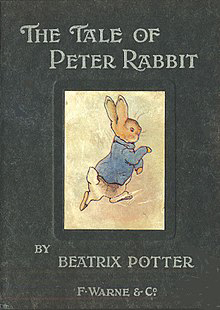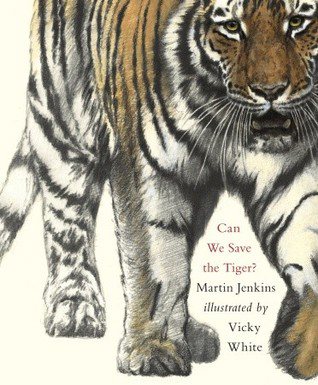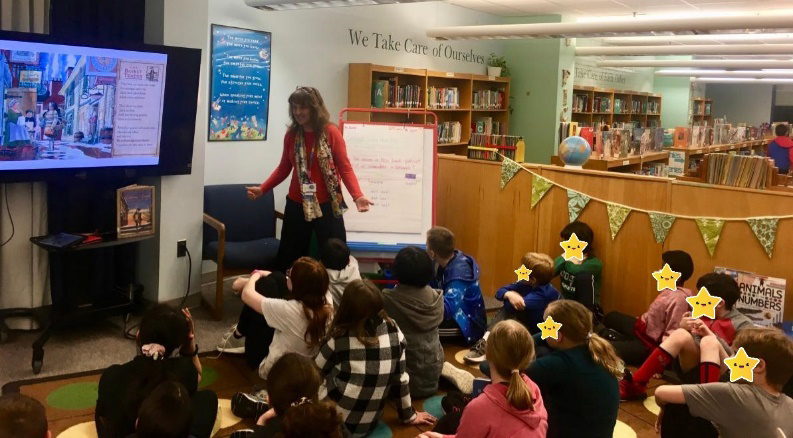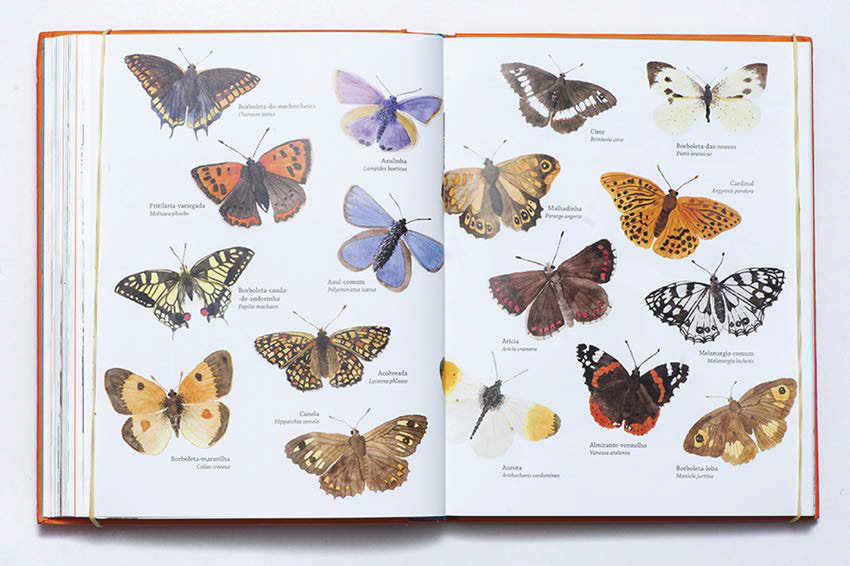
![]()
A World of Information: Children’s Non-Fiction Books in the Digital Age
As a librarian I was constantly meeting people – adult readers and parents who would tell me (often with a hint of superiority) – that they, their partner or their child did not or would not read fiction. It would seem that fiction was something to be despised and had no relation to what has popularly been termed ‘non-fiction’. On the other hand the mere term ‘non-fiction’ has a dismissive and negative air to it; far better to adopt the term ‘information’ perhaps. While I have ideas of my own why this divide takes place, I firmly believe both approaches to reading are valid and should be celebrated, I also think that we should remember that both ‘fact’ (so called) or ‘fiction’ involve the telling of a story. And both should be inspiring, engaging – and imaginative and truthful.
But surely facts are boring – all those dates, numbers, real life. Certainly the way in which factual information is presented can be daunting and uninspiring. How to change this? The recent IBBY UK one-day conference aimed to show how this can happen not just by the writing – though this is crucial – but by the use of illustration to attract attention and bring a subject alive. But what does this involve? Beautiful spreads sweeping across the pages perhaps – but how would they relate to the information the writer is trying to convey? Ana Paula Campos examines the elements that she feels are necessary for illustrations of texts whose purpose is to impart information to young readers. Taking Lá fora, published by Planeta Tangerina in Portuguese but available here in translation, she presents – and illustrates – her criteria. This book does not use a novelistic approach; it is very clearly information, but the varied illustrations allow readers to make connections in different ways.
Yuval Zommer, as an illustrator, picks up this theme; how to engage young readers by innovative and attractive approaches to the information that is on offer. His aim is to get young readers to have a very physical experience – and he does not see this as just the opening of the book – by unfolding pages, following a trail, becoming an active participant to journey underground or travel into space. His work recognises that young people today live in an interactive world and that for information to have an impact it must be relevant to how young people experience life. The cover of this issue demonstrates this – thank you, Yuval Zommer.
How does this translate to the classroom or to family learning? Having a prettily illustrated information text does not guarantee accuracy – even the illustrations might present or cement false assumptions; how to encourage the young to develop a critical approach to material relevant to their subject using both text and illustration to raise questions. Both Karen Bentall and Diletta Donati approach this aspect. Karen Bentall describes a classroom approach in which she took an informational picture book to reach a very diverse class of students. The illustrative aspect allowed her students to relate to the information by making the subject visual and therefore no longer abstract. This bringing-to-life is emphasised by Diletta Donati who examines the way real people – biography – can be presented to young readers. She does not ignore the text but emphasises that readers can meet a subject and feel a real connection and engagement, without lists of dates or tabulations of activities but by the visual creation of aspects that become intangible and meaningless when pinned down by words. Using illustration to reach an audience for information is not new. Martin Jenkins, as author of many titles, records his experiences in this field. It is clear that the collaboration with illustrators has been both rewarding and essential – and recognised by innovative publishers, paving the way for the current scene. It is not that accuracy or research should be abandoned – far from it, indeed the challenge is now the explosion of information available at the digital fingertip. Now accuracy must be presented in a way that adds more than the screen experience; both words and pictures must work to reach the reader.
Reaching the reader was certainly the aim of Girl magazine as it brought lively characters and retellings of classics through its presentation to a wide audience. Nor did it confine itself to fiction. Looking to inspire its female readership it used the comic-strip format to provide information on potential careers (today we may wince at what is on offer and to whom) but there was a genuine effort to open doors that might be otherwise closed as Louise Johnson demonstrates in her article on the Girl feature ‘I want to be an ….’.
Great illustrations do not have to be fanciful; they can be grounded in real representation. The work of Beatrix Potter might to some seem whimsical – all those animals wearing clothes, but as the exhibition at the Victoria & Albert Museum reminded us her work was based on detailed observation and meticulous draughtsmanship – even when she was creating fairyland. We may not be able to visit the museum but we can go back to her books to appreciate this marriage of information and imagination.
Ferelith Hordon

Exhibition Review: Beatrix Potter’s Fairyland
June Hopper Swain Tucked away upstairs in the Victoria & Albert Museum’s Leighton Corridor, this well-mounted exhibition, that offers much to delight and surprise, concentrates on those aspects of the creative work of Beatrix Potter (1866–1943) that are rarely...

Prima Le Parole
Martin Jenkins I have been writing non-fiction (information, fact-based, call them what you will) books aimed at children, natural history mainly, for nearly 30 years now.I have had a fair few published and usually several on the go at any one time. In that sense I do...

Getting Us Engaged! The Power of Biographical Picture Books
Diletta Donato Biographical picture books weave their magic in so many different ways. They may sweep us up in the excitement of new research, evoke the past through the power of poetry, or even captivate us with obscure lists of naval equipment, maps and faded...

Non-Fiction: Its Relevance, Popularity and Creativity!
Yuval Zommer We are in the midst of a golden age for non-fiction as more titles than ever before are being published, with higher production values and covering a wider, more diverse range of subjects. According to figures collected annually by the Booksellers...

I Want to Be an . . . Air Stewardess: The Careers Comics of GIRL (1951–1964)
Louise Johnson I was always going to read GIRL. Was there ever any other choice for somebody who grew up in the eighties reading the weekly Twinkle (1968–1999) and began to collect books in the nineties, driven by the republishing of the Chalet School books by Elinor...

Storytime and Engaged Learning with an Informational Poetry Picture Book
Karen Bentall Non-fiction picture books are a staple of storytime for me and my 620 students. After the extraordinary stillness when all eyes and ears are on the book, I aim to facilitate inclusive, highly focused and exhilarating discussions as we process new...

Inventório: Design Influences on Science Picture Books for Children
Ana Paula Campos As a graphic designer from São Paulo, Brazil, I did a four-year Master’s programme on design and scientific dissemination for children. It was only in the final stages of this process that I came across informational books and found that there were...
